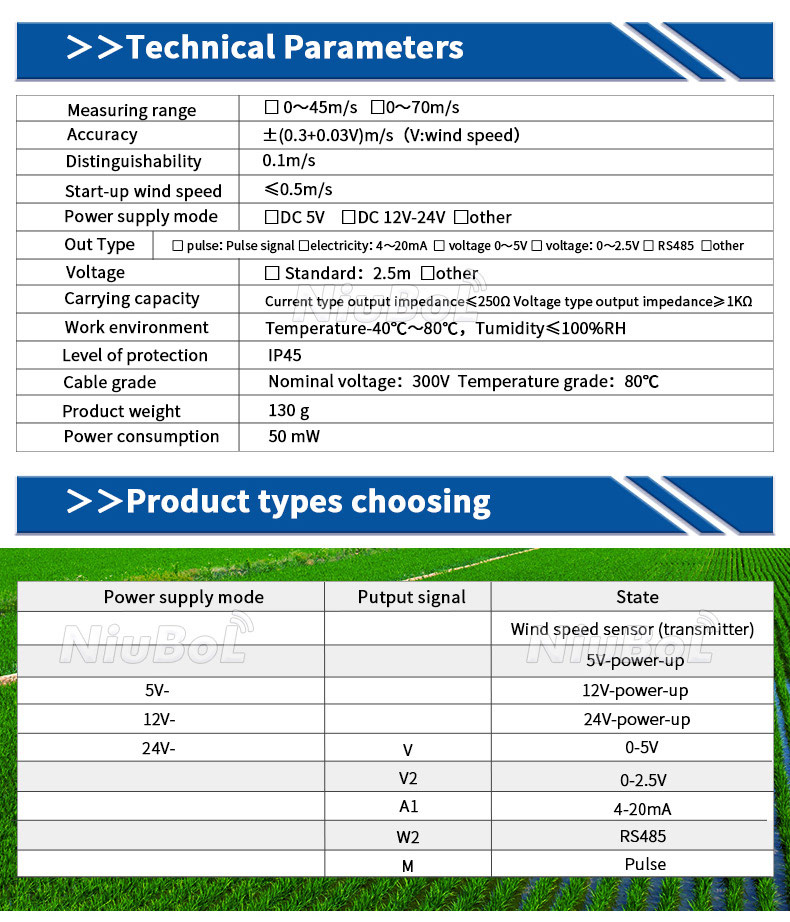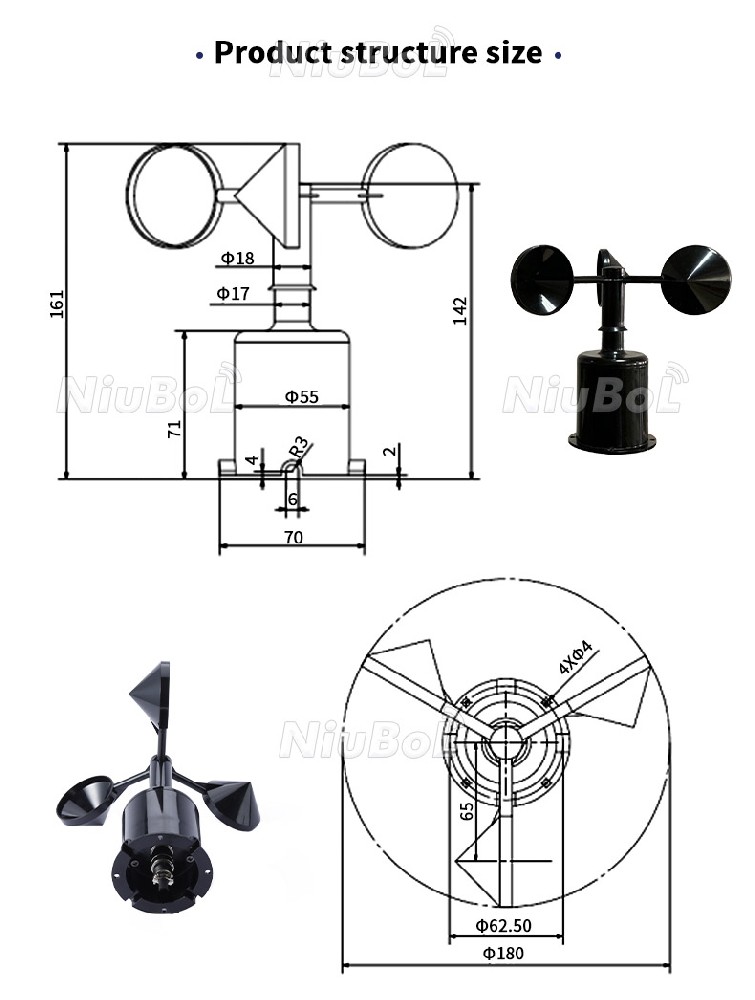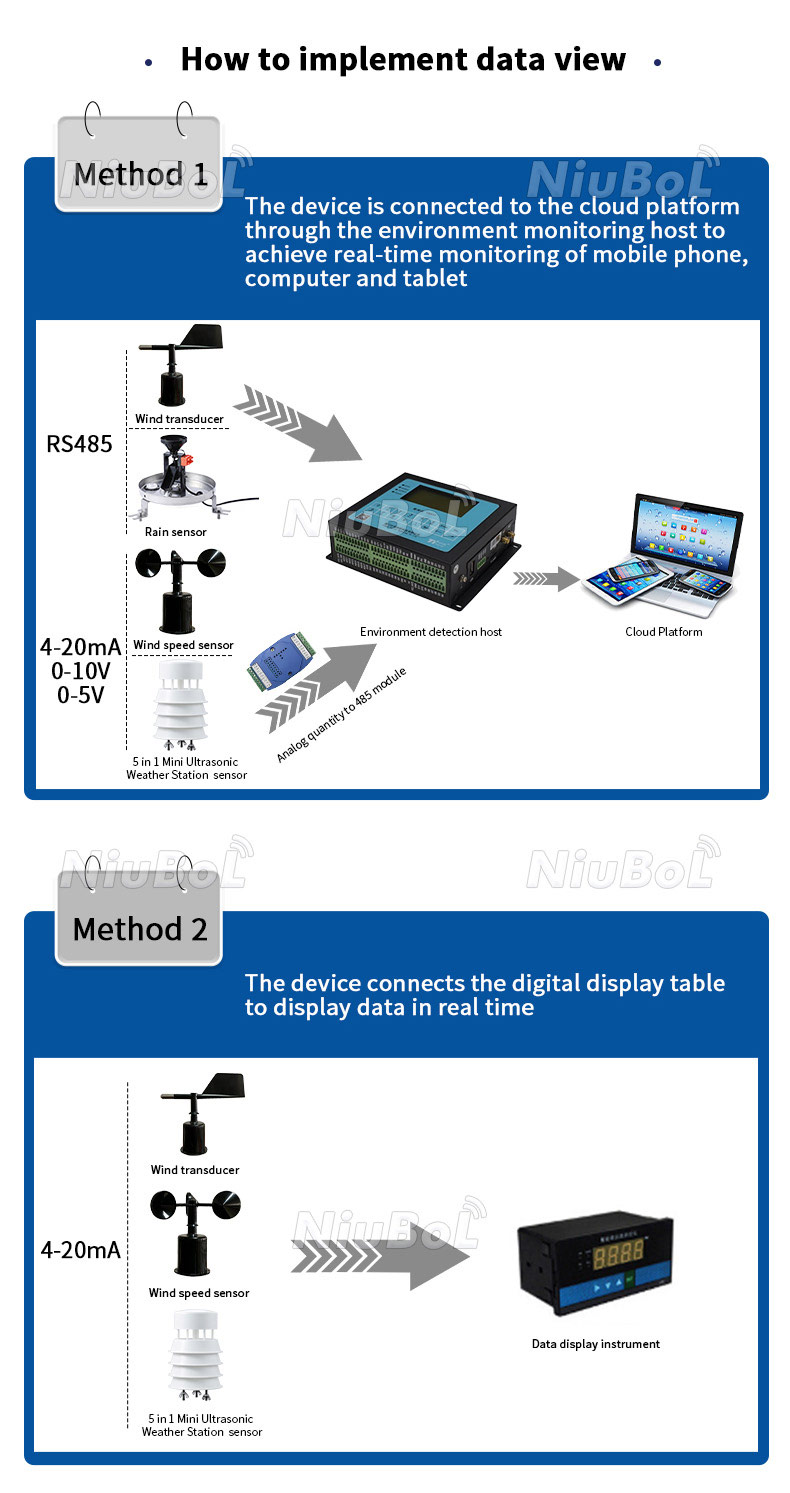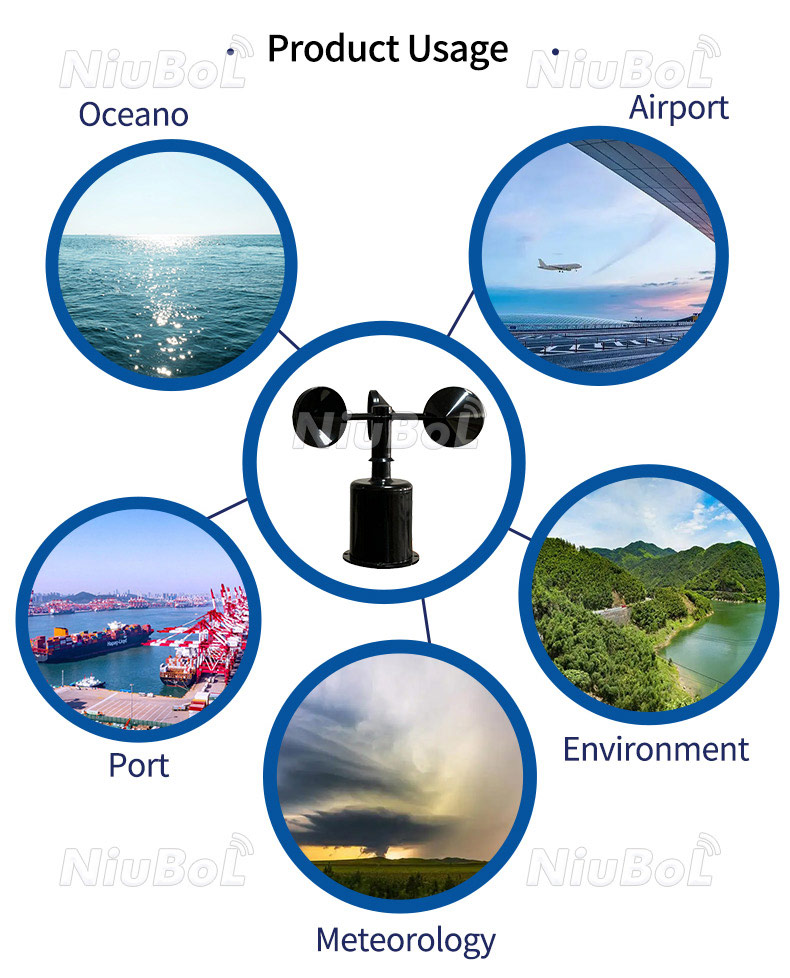

— Blogs —
—Products—
 Consumer hotline +8618073152920
Consumer hotline +8618073152920 WhatsApp:+8615367865107
Address:Room 102, District D, Houhu Industrial Park, Yuelu District, Changsha City, Hunan Province, China
Product knowledge
Time:2024-01-14 11:46:07 Popularity:2406
Anemometer is an instrument for measuring wind speed, which is mainly used in meteorological observation and environmental protection and other fields. It can measure wind speed, wind direction, wind force and other parameters to help people understand the flow conditions of the atmosphere and meteorological changes. In environmental protection, Anemometer can be used for monitoring air quality and pollutant dispersion and other aspects of research, providing scientific basis for environmental protection.
In addition, Anemometer can also be used in the fields of wind power generation and wind pumping to help assess the utilisation value of wind energy resources. In conclusion, the Anemometer is an important meteorological instrument that can help people better understand and utilise the resources of the atmosphere.
Anemometer is an instrument used to measure wind speed, which can be achieved with different accuracy by different designs. The following are a few common types of anemometers:
1. Rotating cup anemometer: It consists of three or four cups, each placed on a vertical axis. As the wind blows through the cups, they begin to rotate at a rate proportional to the wind speed. This type of anemometer is the most common type and is usually used to measure moderate wind speeds.
2. Hot-wire anemometer: Measures wind speed by using the principle that the resistance of a hot wire changes with wind speed. The heater is heated to a certain temperature and when the wind blows over it, it cools down, thus changing the resistance of the heater. This type of anemometer is usually used for low wind speed measurements. 3.
3. Pressure anemometer: consists of a device that measures the difference in wind pressure and a barometer. When the wind blows through the device, it will produce a pressure difference, the pressure difference is proportional to the wind speed. This type of anemometer is typically used in environments with high wind speeds or large variations in atmospheric pressure.

Anemometers have a wide range of applications in many fields, such as weather forecasting. By accurately measuring wind speed and other parameters, anemometers can provide the necessary data to support these applications.
An anemometer is an instrument used to measure wind speed, which is widely used in construction engineering, flight control, environmental monitoring, meteorological observation, environmental protection, aviation, transport and other fields. The following are some of the main uses of anemometers:

Meteorological observation: Meteorological stations use anemometers to observe and measure meteorological parameters such as wind speed and direction to understand the flow conditions of the atmosphere and meteorological changes. These data are important for weather forecasting, climate analysis and meteorological services.
Environmental protection: Anemometers can be used in studies such as monitoring air quality and pollutant dispersion, helping to understand the degree of air pollution and the spreading path of pollutants. For example, in monitoring the concentration of suspended particulate matter in the atmosphere, anemometers can provide accurate measurement data to help scientists better understand air quality and pollutant dispersion.

Aviation: In aviation, wind speed and direction have a significant impact on flight safety and efficiency. Anemometers can accurately measure current and future wind speed and direction, providing information necessary for flight and airport operations, helping pilots plan flights, adjust flight speed and heading, and ensure safe and efficient flights.
Traffic: In the field of traffic, anemometers can help traffic safety management departments to understand the wind speed and direction and other meteorological conditions on the road or in the field, so as to take corresponding measures to ensure traffic safety. For example, when the wind speed is too high, bridges can be closed or other safety measures taken to avoid traffic accidents caused by strong winds.

Energy Utilisation: In the field of energy utilisation, anemometers can help assess the utilisation value of wind energy resources. Through the measurement of wind speed, wind direction and other parameters, you can understand the distribution and intensity of wind energy, wind power generation and wind pumping and other fields to provide scientific evidence and technical support.
In conclusion, anemometer is an important meteorological instrument with a wide range of applications and uses. Through the use of anemometers, people can better understand the flow of the atmosphere and meteorological changes, and take corresponding measures to deal with various meteorological conditions and environmental problems.
Related recommendations
Sensors & Weather Stations Catalog
Agriculture Sensors and Weather Stations Catalog-NiuBoL.pdf
Weather Stations Catalog-NiuBoL.pdf
Related products
 Combined air temperature and relative humidity sensor
Combined air temperature and relative humidity sensor Soil Moisture Temperature sensor for irrigation
Soil Moisture Temperature sensor for irrigation Soil pH sensor RS485 soil Testing instrument soil ph meter for agriculture
Soil pH sensor RS485 soil Testing instrument soil ph meter for agriculture Wind Speed sensor Output Modbus/RS485/Analog/0-5V/4-20mA
Wind Speed sensor Output Modbus/RS485/Analog/0-5V/4-20mA Tipping bucket rain gauge for weather monitoring auto rainfall sensor RS485/Outdoor/stainless steel
Tipping bucket rain gauge for weather monitoring auto rainfall sensor RS485/Outdoor/stainless steel Pyranometer Solar Radiation Sensor 4-20mA/RS485
Pyranometer Solar Radiation Sensor 4-20mA/RS485
Screenshot, WhatsApp to identify the QR code
WhatsApp number:+8615367865107
(Click on WhatsApp to copy and add friends)
